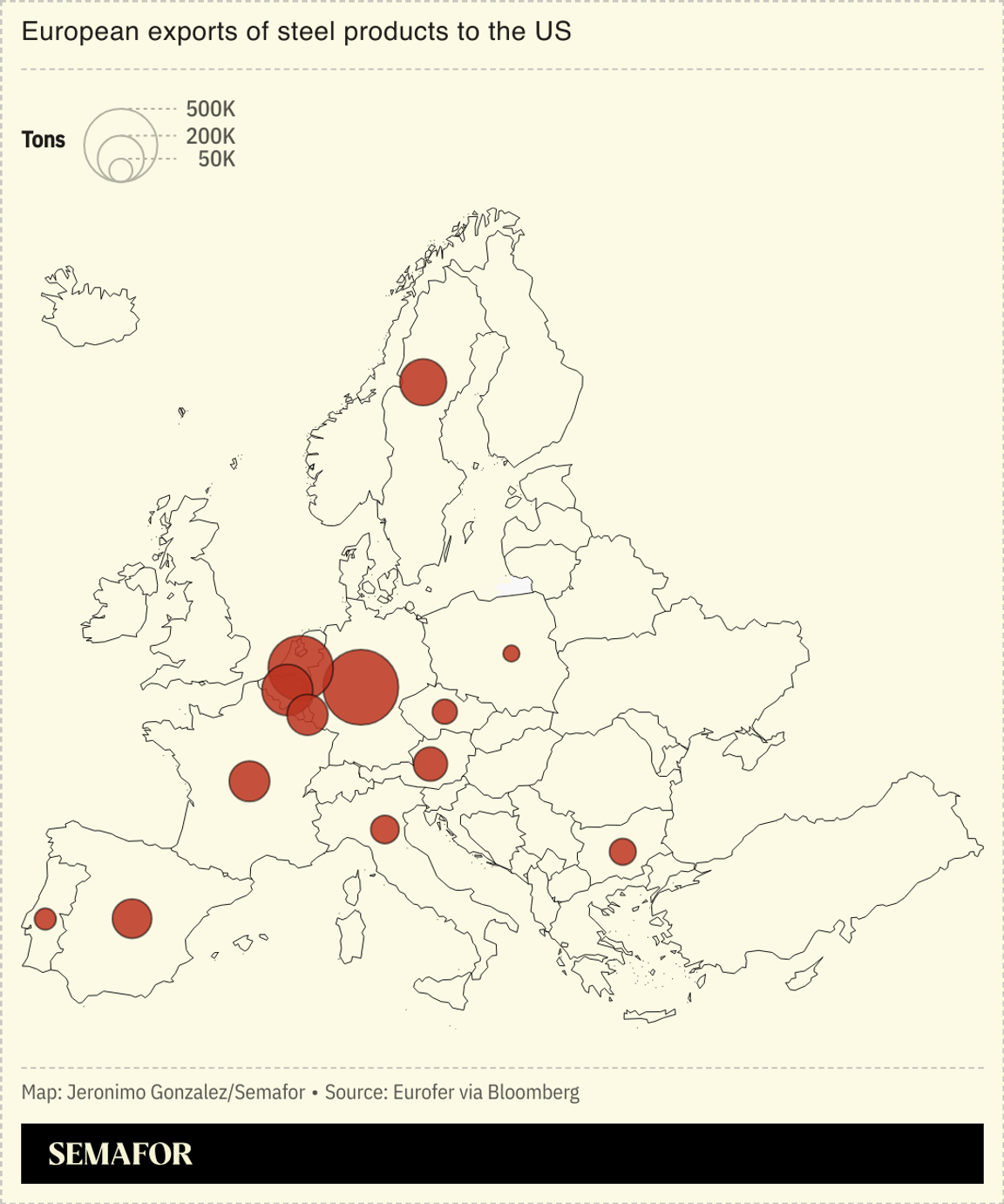 The tariffs that Trump said he plans to slap on steel imports will likely drive up emissions from the global steel industry and do little to support cleaner manufacturing in the US, industry experts told Semafor. The US will impose a 25% tariff on steel imports, Trump said this week, which will hit top exporters like Canada, Brazil, and Mexico hardest. Some steel exporters, especially in Asia, rely on technology that is more carbon-intensive than what’s commonly used in the US, so the tariffs could drive down steel-related emissions in the US, said Caroline Ashley, director of the advocacy group SteelWatch. But that benefit could be offset by rising emissions from steelmaking in those countries, she said; to counter the effect of US tariffs, government subsidies “will now be directed to propping up steelmaking short term rather than decarbonising it for the long-term,” she said. Within the US, the tariffs won’t do much to change the economics of scaling up the production of low-carbon steel, much of which is being snapped up by automakers, said Tim Hill, commercial general manager of Nucor, the top US steel producer. “Tariffs alone are unlikely to spur investment in clean steel in the US,” said Hilary Lewis, steel director at the advocacy group Industrious Labs. “We need the government to support direct investment in aging, outdated facilities to help them modernize. If we do that, the US could have a globally leading, clean iron and steel fleet with a competitive edge.” |